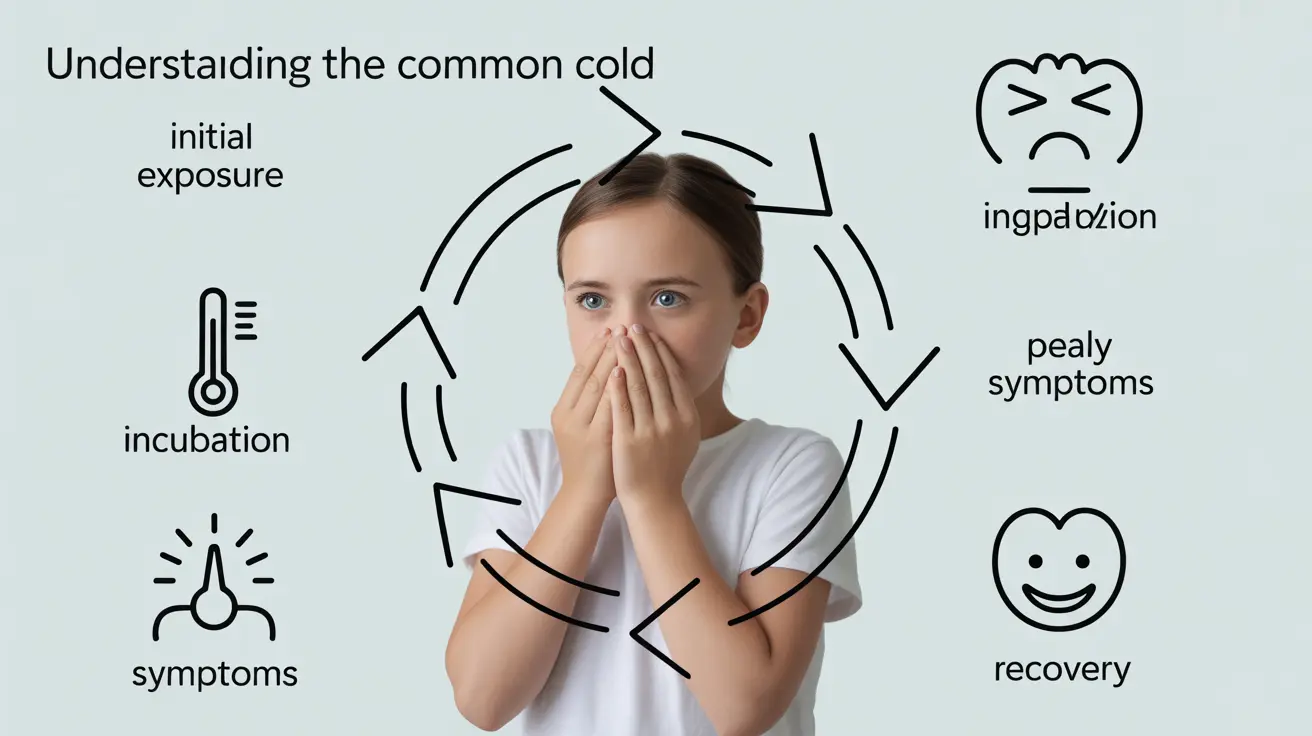The common cold follows a predictable pattern as it moves through various stages in the body. Understanding this life cycle can help you better manage symptoms and know what to expect during the illness. This comprehensive guide will walk you through each phase of a cold, from initial exposure to full recovery, while providing practical advice for treatment and prevention.
Initial Exposure and Incubation
When you're first exposed to a cold virus, it enters your body through your nose, mouth, or eyes. During this incubation period, which typically lasts 24-72 hours, the virus begins multiplying in your upper respiratory tract. You may feel completely normal during this time, even though the virus is actively replicating.
Early Warning Signs
The first noticeable symptoms usually appear gradually and may include:
- Mild scratchy or sore throat
- Slight fatigue
- Mild nasal congestion
- Occasional sneezing
Peak Cold Symptoms
Around days 2-3, cold symptoms typically reach their height. During this phase, you might experience:
- Pronounced nasal congestion and runny nose
- Frequent sneezing
- Coughing
- Sore throat
- Fatigue
- Mild body aches
- Possible low-grade fever
The Productive Phase
As your immune system fights the virus, you may notice changes in nasal discharge, progressing from clear to thicker and possibly yellowish or greenish. This is typically normal and doesn't necessarily indicate a bacterial infection.
Recovery Stage
Most people begin feeling better after 4-5 days, though some symptoms may persist for up to two weeks. During this phase:
- Congestion gradually clears
- Energy levels improve
- Cough may linger but becomes less frequent
- Throat irritation subsides
Prevention and Management Strategies
Taking proactive steps can help reduce your risk of catching a cold and manage symptoms when they appear:
- Regular handwashing
- Maintaining good sleep habits
- Staying hydrated
- Using a humidifier
- Taking vitamin C and zinc supplements
- Avoiding close contact with infected individuals
Frequently Asked Questions
What are the typical stages of a cold, from initial symptoms to recovery?
A cold typically progresses through four main stages: incubation (1-3 days), early symptoms (scratchy throat and fatigue), peak symptoms (days 2-3 with congestion, coughing, and sneezing), and recovery (beginning around day 4-5, with gradual improvement over 1-2 weeks).
How long am I contagious with a cold, and what are the best ways to prevent spreading it?
You're most contagious during the first 2-3 days of symptoms and can remain contagious for up to two weeks. To prevent spreading, wash hands frequently, cover coughs and sneezes, avoid close contact with others, and stay home when possible during the peak symptomatic period.
What are some effective natural remedies to help alleviate cold symptoms like a sore throat and congestion?
Effective natural remedies include honey for sore throat, saline nasal irrigation for congestion, steam inhalation, ginger tea, and garlic. Rest, hydration, and vitamin C-rich foods can also support recovery. A humidifier can help ease respiratory symptoms.
Can a cold be mistaken for allergies, and what are the key differences in symptoms?
Yes, colds and allergies can present similarly. Key differences include: colds typically last 7-10 days while allergies persist longer, colds often cause fatigue and body aches while allergies don't, and allergies usually cause itchy eyes and throat while colds rarely do. Fever may occur with colds but never with allergies.
How can I prevent or reduce the risk of getting a cold, especially during peak flu seasons?
Prevent colds by practicing good hygiene (frequent handwashing), maintaining a healthy lifestyle with adequate sleep and exercise, eating a balanced diet rich in vitamins and minerals, avoiding touching your face, and staying away from sick individuals. During peak seasons, consider taking immune-supporting supplements and wearing a mask in crowded places.




